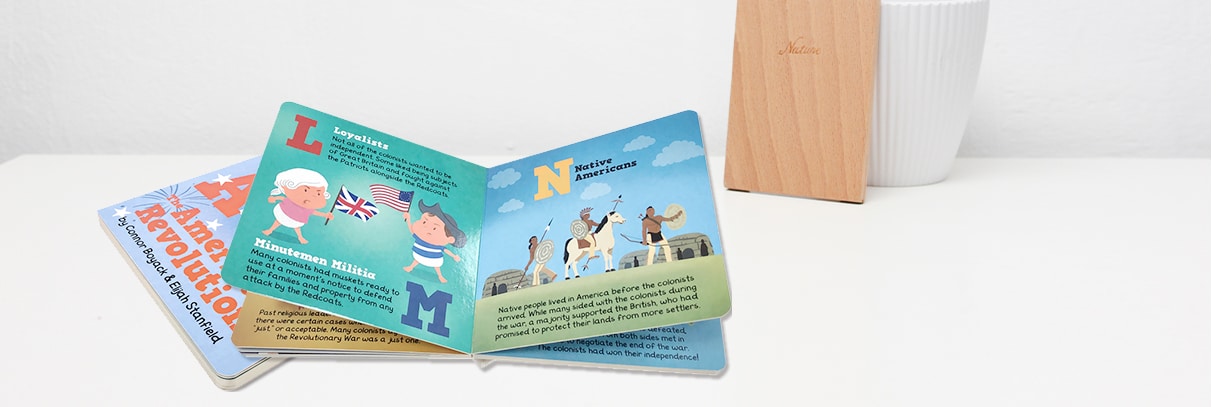Are you thinking about self publishing a children’s book but unsure how much it will cost? You’re not alone.
Many writers wonder if their dream of seeing their story in print will break the bank. The truth is, the cost can vary widely depending on your choices. Knowing what to expect can help you plan your budget and avoid surprises.
You’ll discover the real expenses behind self publishing a children’s book, so you can take confident steps toward bringing your story to life. Keep reading to find out how to make your dream affordable and achievable.

Credit: www.publishpros.com
Cost Breakdown Of Self-publishing
Self-publishing a children’s book involves several costs. Understanding each expense helps plan your budget. These costs vary depending on your choices and project size.
Below is a clear breakdown of common expenses in self-publishing a children’s book.
Manuscript Preparation Expenses
Writing your story might be free if you do it yourself. Some authors hire a writing coach or ghostwriter. These services can cost from a few hundred to over a thousand dollars. Preparing a strong manuscript saves money later in editing.
Illustration And Artwork Fees
Children’s books need colorful and engaging pictures. Hiring an illustrator often costs between $50 to $300 per image. Some illustrators charge by the page or project. Quality art attracts young readers and makes your book stand out.
Editing And Proofreading Costs
Editing improves story flow and fixes errors. Proofreading checks grammar and spelling mistakes. Editors usually charge $300 to $1,000 depending on book length. Skipping editing can hurt your book’s quality and reputation.
Design And Formatting Charges
Good design includes cover and layout. Formatting prepares your book for print and digital formats. Design fees range from $200 to $700. Proper formatting ensures your book looks professional on all devices.
Printing And Distribution Prices
Printing costs depend on book size, page count, and quantity. Print-on-demand options cost less upfront but have higher per-copy prices. Bulk printing lowers per-book cost but needs larger investment. Distribution may include fees for online stores or bookstores.
Marketing And Promotion Budgets
Marketing helps readers find your book. Costs include social media ads, book reviews, and giveaways. Budgets vary from $100 to several thousand dollars. Effective promotion increases sales and builds your author brand.

Credit: www.qinprinting.com
Factors Influencing Total Costs
Self-publishing a children’s book involves several cost factors. These factors affect the total amount you will spend. Understanding them helps plan your budget better. Each element adds its own price to the final cost.
Book Length And Complexity
Longer books need more pages, which raises printing costs. Complex stories may require more editing and design work. Simple texts cost less to produce. Detailed books take extra time and effort.
Quality Of Illustrations
Illustrations make children’s books special but can be costly. Hand-drawn or custom art demands higher fees. Stock images or simple drawings cost less. The number of illustrations also affects the budget.
Choice Of Printing Method
Print-on-demand suits small runs and lowers upfront costs. Bulk printing reduces cost per book but needs a bigger investment. Color printing costs more than black and white. Paper quality also changes the price.
Distribution Channels Selected
Selling online involves fees for platforms and shipping. Local bookstores may take a percentage of sales. Direct sales at events require little extra cost. Each channel has different expenses and reach.
Marketing Strategies Adopted
Marketing can include social media ads, book reviews, or events. Paid ads cost money but reach more readers fast. Free methods take time but save cash. Budget size guides the choice of marketing tools.
Budget-friendly Tips For Authors
Publishing a children’s book on a budget is possible. Careful choices can save money without losing quality. Knowing where to spend and where to save helps a lot. The tips below guide authors to keep costs low and results high.
Hiring Freelancers Vs Agencies
Freelancers often cost less than agencies. They work directly with authors, cutting extra fees. You can hire freelancers for writing, editing, or illustration. Agencies offer a full range of services but usually charge more. Choose freelancers for specific tasks to control your budget better.
Using Print-on-demand Services
Print-on-demand lets you print books only when ordered. This avoids large print runs and storage costs. You pay for each copy printed, not upfront. Many platforms offer easy setup with no minimum orders. This method reduces risk and keeps expenses manageable.
Leveraging Free Or Low-cost Tools
Free tools can help with book design and editing. Programs like Canva or GIMP offer simple graphic options. Grammarly and Hemingway Editor assist with clear writing. Use these tools to polish your book without hiring expensive pros. Many online resources save money and improve quality.
Diy Marketing Approaches
Marketing your book yourself saves money on ads and agencies. Use social media to share your story and connect with readers. Create simple content like videos, blog posts, or email newsletters. Engage with local schools or libraries for free events. Personal effort goes a long way in promotion.
Crowdfunding And Pre-sales
Crowdfunding helps raise money before printing your book. Platforms like Kickstarter allow supporters to fund your project. Pre-sales also secure funds and gauge reader interest. This reduces financial risk and builds an audience early. It’s a smart way to fund your publishing journey.
Comparing Traditional Publishing Expenses
Traditional publishing comes with many costs for authors. Understanding these expenses helps when comparing with self-publishing. Authors often face hidden fees and time delays. Knowing these details allows better decisions about how to publish a children’s book.
Costs vary depending on the publisher and contract. Some expenses may surprise new writers. Here is a clear look at common costs in traditional publishing.
Advance Payments And Royalties
Publishers often give an advance payment before the book sells. This amount varies widely. Advances can range from a few hundred to several thousand dollars. Authors do not receive royalties until the advance is earned back. Royalties are a percentage of book sales. This percentage is usually between 5% and 15%. The money flow depends on book popularity. Many authors earn less from royalties than expected.
Out-of-pocket Costs
Authors may pay for editing, cover design, or marketing. Some publishers cover these costs. Others ask authors to share or pay all expenses. Costs add up quickly. Marketing can cost hundreds or thousands of dollars. Authors might also spend money on travel or events. These expenses can reduce overall earnings.
Time Investment Differences
Traditional publishing takes a long time. The process can last 12 to 24 months. Finding an agent and publisher adds months or years. Authors wait for edits, approvals, and printing. Self-publishing offers faster timelines. Traditional publishing demands patience and steady effort.
Estimating Costs For Different Book Formats
Choosing the right format for a children’s book affects the total cost. Each format has its own expenses for creation and distribution. Understanding these costs helps plan your budget well.
Self-publishing offers three main book formats: print, ebook, and audiobook. Each one reaches readers differently and costs vary. Let’s explore the cost details for each type.
Print Books
Printing a physical book involves several costs. These include cover design, interior layout, and printing fees. Print runs can be small or large, affecting the price per copy.
Print-on-demand services reduce upfront costs. You pay only when a book sells. Setup fees might apply for formatting and cover design.
Shipping and storage add to expenses. Bulk printing lowers cost per book but needs more investment upfront.
Ebooks
Ebooks cost less to produce than print. They need digital formatting and cover design. Formatting must suit various devices like tablets and phones.
No printing or shipping fees apply. Distribution usually involves platforms like Amazon Kindle or Apple Books. These platforms take a small percentage of sales.
Ebook marketing can add to the budget. Good promotion helps your book reach more readers.
Audiobooks
Audiobooks involve recording and editing costs. You might hire a professional narrator or do it yourself. Studio time and sound editing add to expenses.
Quality matters for listener experience. Poor audio can turn readers away. Distribution platforms take a share of audiobook sales.
Audiobooks reach a growing audience. They require a bigger initial investment than ebooks or print.
Common Mistakes To Avoid
Self-publishing a children’s book can be exciting and rewarding. Many new authors make common mistakes that raise costs or slow progress. Avoiding these errors helps save money and effort. Here are key mistakes to watch out for during your journey.
Underestimating Editing Needs
Editing is crucial for a children’s book. Skipping or underestimating it leads to errors and weak storytelling. Professional editors catch grammar mistakes and improve flow. They help make your book clear and fun to read. Plan a good budget for editing to ensure quality.
Ignoring Professional Illustrations
Children’s books rely on pictures to engage readers. Using amateur or free images can hurt your book’s appeal. Professional illustrators create unique, colorful art that fits your story. Investing in quality illustrations increases your book’s chances of success and sales.
Skipping Marketing Budget
Many authors think writing is enough to sell books. Marketing costs money but spreads the word about your book. Without promotion, your book may stay unnoticed. Set aside funds for social media ads, book readings, or giveaways. This step helps reach parents, teachers, and kids.
Choosing Inappropriate Printing Options
Printing choices affect both cost and quality. Cheap printing may lower quality, making your book less appealing. Large print runs cost more upfront but reduce cost per book. Print-on-demand saves money but can have longer delivery times. Choose printing that matches your budget and goals.

Credit: brookevitale.com
Frequently Asked Questions
How Much Does Illustrating A Children’s Book Cost?
Illustration costs vary widely, from $100 to $5,000+. It depends on the artist’s experience, style, and book length. Detailed, full-color illustrations cost more. Budgeting for quality artwork is crucial for engaging young readers and enhancing your book’s appeal.
What Are The Main Expenses In Self-publishing?
Key expenses include editing, illustration, formatting, cover design, and printing. Marketing and distribution also add to the budget. Costs vary based on book length, complexity, and chosen services. Planning these expenses helps ensure a smooth self-publishing process.
Can I Self-publish A Children’s Book For Under $1,000?
Yes, with careful budgeting, self-publishing under $1,000 is possible. Opt for freelance services, minimal prints, and digital formats. Prioritize essential services like editing and illustration to maintain quality while saving costs.
How Much Does Professional Editing For Children’s Books Cost?
Professional editing typically costs $300 to $1,000 depending on book length and editor expertise. Editing improves clarity, grammar, and story flow, essential for children’s books. Investing in editing boosts your book’s professionalism and reader engagement.
Conclusion
Publishing a children’s book on your own takes some money. Costs vary depending on editing, illustrations, and printing choices. You can control expenses by choosing services carefully. Planning your budget helps avoid surprises along the way. Many authors find self-publishing rewarding despite the costs.
It lets you share your story with young readers. Start small, learn as you go, and enjoy the process. Your book can reach many children with patience and effort.